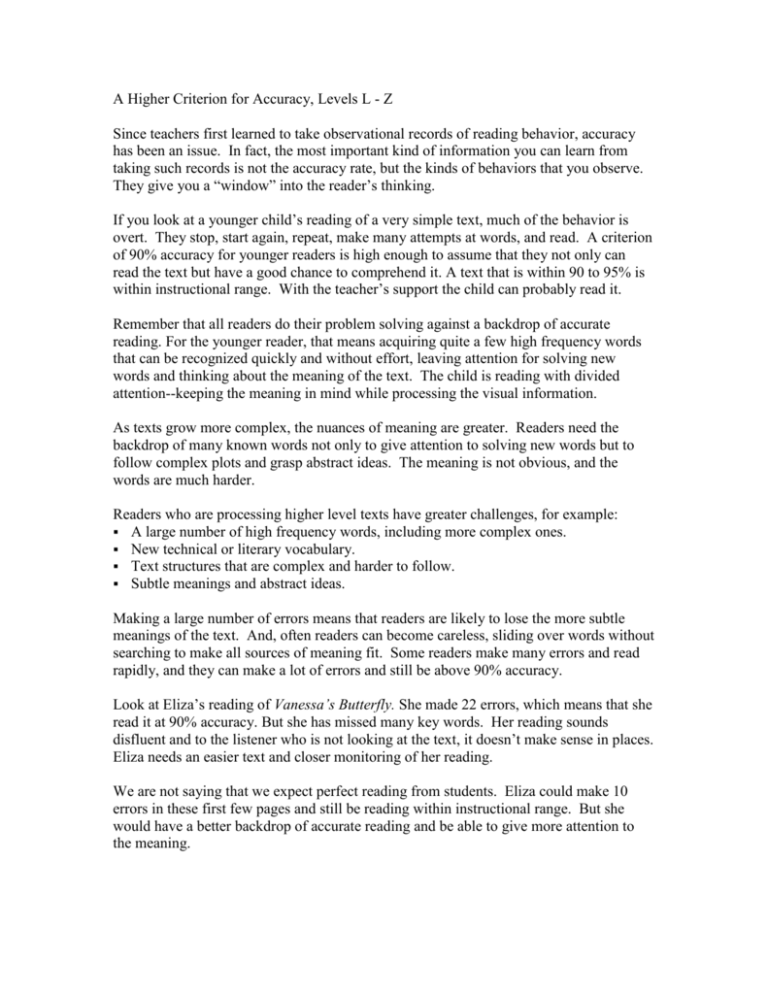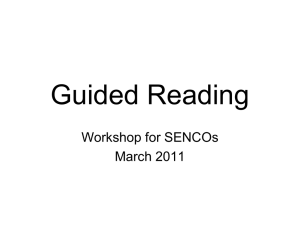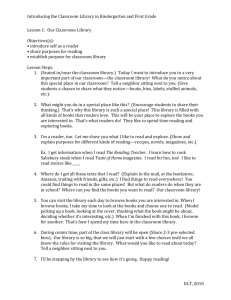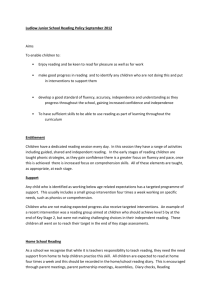A Higher Criterion for Accuracy, Levels L - Z
advertisement

A Higher Criterion for Accuracy, Levels L - Z Since teachers first learned to take observational records of reading behavior, accuracy has been an issue. In fact, the most important kind of information you can learn from taking such records is not the accuracy rate, but the kinds of behaviors that you observe. They give you a “window” into the reader’s thinking. If you look at a younger child’s reading of a very simple text, much of the behavior is overt. They stop, start again, repeat, make many attempts at words, and read. A criterion of 90% accuracy for younger readers is high enough to assume that they not only can read the text but have a good chance to comprehend it. A text that is within 90 to 95% is within instructional range. With the teacher’s support the child can probably read it. Remember that all readers do their problem solving against a backdrop of accurate reading. For the younger reader, that means acquiring quite a few high frequency words that can be recognized quickly and without effort, leaving attention for solving new words and thinking about the meaning of the text. The child is reading with divided attention--keeping the meaning in mind while processing the visual information. As texts grow more complex, the nuances of meaning are greater. Readers need the backdrop of many known words not only to give attention to solving new words but to follow complex plots and grasp abstract ideas. The meaning is not obvious, and the words are much harder. Readers who are processing higher level texts have greater challenges, for example: A large number of high frequency words, including more complex ones. New technical or literary vocabulary. Text structures that are complex and harder to follow. Subtle meanings and abstract ideas. Making a large number of errors means that readers are likely to lose the more subtle meanings of the text. And, often readers can become careless, sliding over words without searching to make all sources of meaning fit. Some readers make many errors and read rapidly, and they can make a lot of errors and still be above 90% accuracy. Look at Eliza’s reading of Vanessa’s Butterfly. She made 22 errors, which means that she read it at 90% accuracy. But she has missed many key words. Her reading sounds disfluent and to the listener who is not looking at the text, it doesn’t make sense in places. Eliza needs an easier text and closer monitoring of her reading. We are not saying that we expect perfect reading from students. Eliza could make 10 errors in these first few pages and still be reading within instructional range. But she would have a better backdrop of accurate reading and be able to give more attention to the meaning. Another point is that many readers have learned to read with high accuracy (at least above 90%) without thinking deeply about what they are reading. In fact, they may score high on benchmark assessments only to have difficulty on other tests of reading, especially comprehension. We have known readers who can read all the way to level Z at 90%+ accuracy but have great difficulty grasping the ideas in the text. In the Fountas and Pinnell Benchmark Assessment system, we have established the requirement of satisfactory or excellent comprehension. And for more complex reading, we have raised the requirement to 95% accuracy for instructional reading and 98% accuracy for independent reading. If you think of a highly proficient high school or adult reader, 90% accuracy would be very poor reading. In fact, that reader would probably be 99% to 100% accuracy over the reading of a longer text such as a novel. Why the change at Level L? Level L is approximately the middle of grade 2. That is a transitional time when students are taking on longer texts such as chapter books and more difficult informational texts. We need to be sure that they are processing those texts with enough accuracy to carry the meaning over many days of reading. It is always difficult to decide on the point of change because reading progress is continual and readers vary as individuals. In order to maintain systematic data collection, however, the point of change must be standard. Our field test results indicate strongly that these criteria, systematically applied, do support this benchmark system as a true gradient against which to measure a reader’s current ability. We need as accurate a picture as possible of all readers so that we can select the instructional texts that will help them expand their reading competencies.








